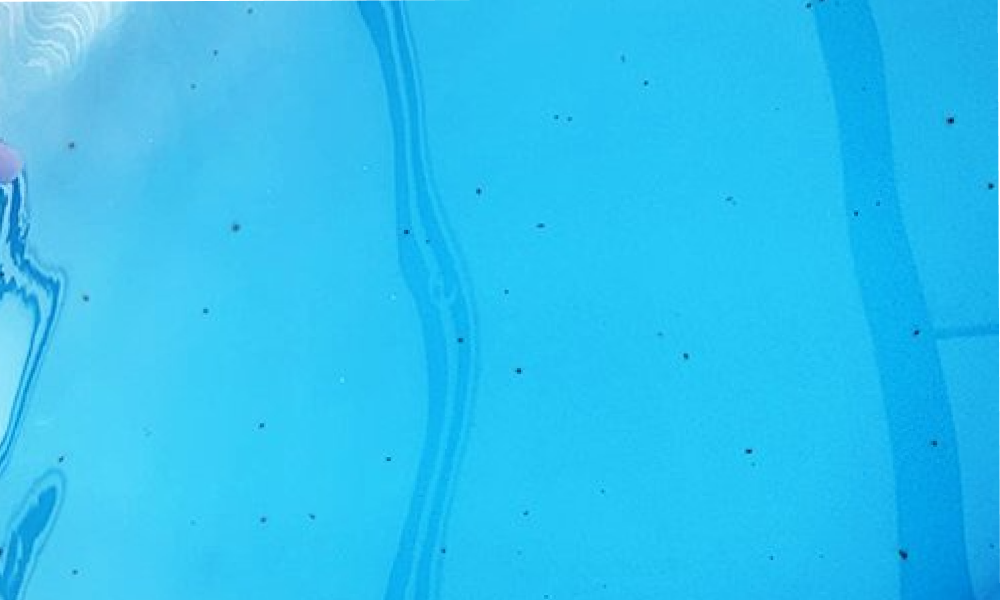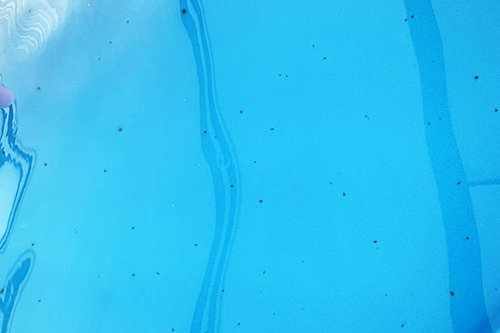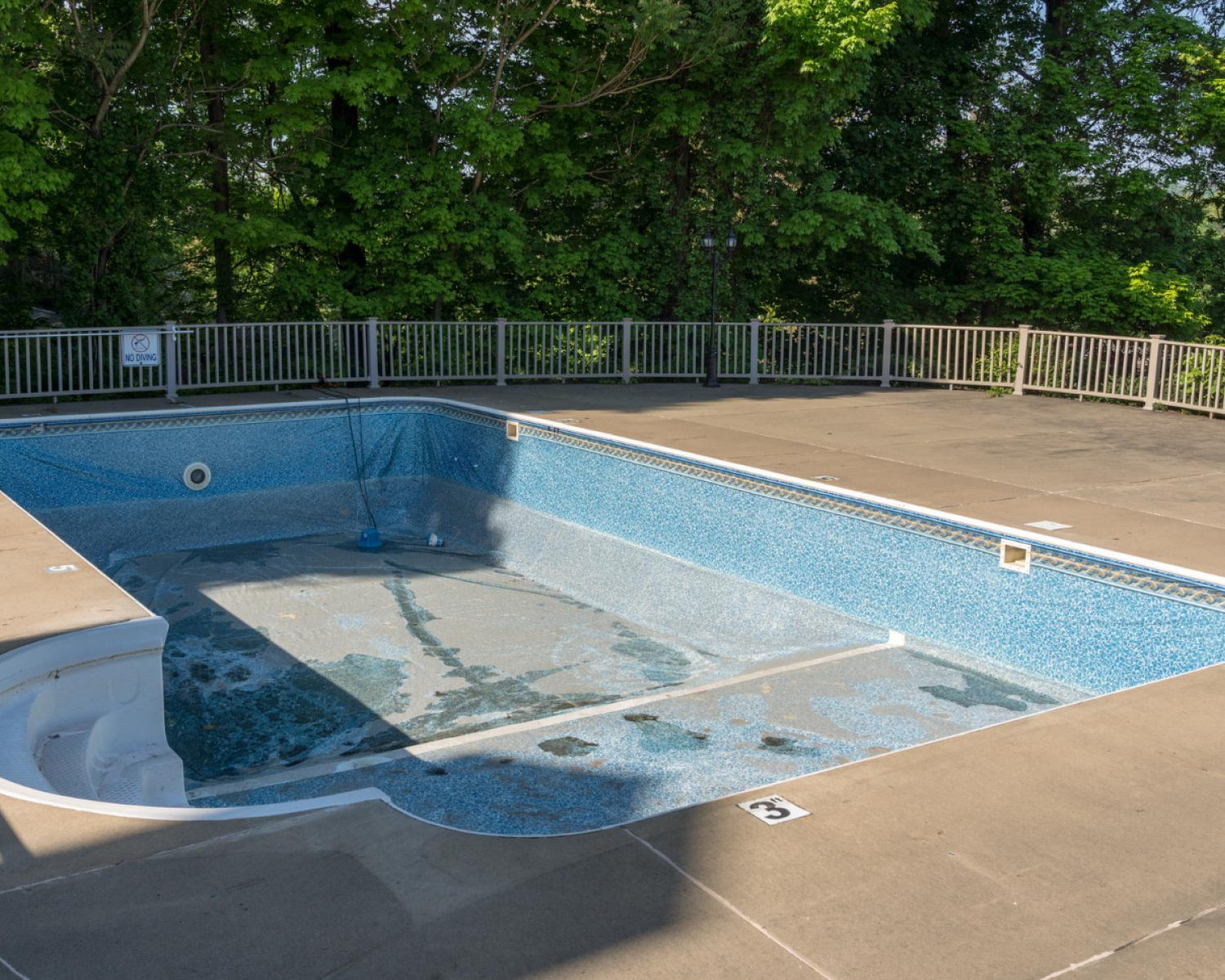
Pool blisters or osmosis gel
Fiberglass is a material that is flexible, lightweight, durable, and easy to maintain. Its lifespan exceeds 100 years because glass, the mineral component of the material, takes a long time to decompose. It's no coincidence that this material is used to reinforce plastics and is frequently utilized in boats, cars, vans, surfboards, rods, and other construction materials. Nevertheless, you may encounter an issue referred to as "Pool Blisters." We are often asked about this issue in connection with a fiberglass pool. Because we always strive for open communication with our customers and take pride in our high-quality pools, we have decided to address this topic in a full article.
A bit of physics, or what is osmosis?
Osmosis is a physical process in which a liquid or fluid passes through a semi-permeable membrane and its pores under the influence of pressure. In simpler terms, osmosis of the gelcoat causes a surface defect in low-quality fiberglass pools, commonly known as "pool blisters". The final gelcoat layer, which is a glossy and waterproof material covering the pool's structure, gradually loses its properties and becomes permeable and micro-porous, allowing moisture to pass through.
When the gel surface becomes micro-porous, it allows water to pass through the pool's structure, and often even escape from the outer shell of the pool, which can result in water leakage. This also applies in the opposite direction - moisture from the surrounding soil, which surrounds the fiberglass pool, can gradually accumulate in the micro-pores of the outer shell of the pool, creating visible bubbles from the outside. This is most commonly manifested by black spots, which, when they burst, release a very unpleasant dark liquid. In addition to being unsightly, pool blisters over time lead to the peeling of the pool's top layer.

How to identify osmosis in a pool?
- Presence of blisters on the surface with liquid inside.
- The fluid from the blisters is sticky and smells like vinegar. It has a reddish-brown to black color.
- You can use pH paper to measure the acidity of the liquids. A value between 3 – 6 indicates the presence of osmosis.
- Measurements taken with a hygrometer show a high level of moisture in the laminate.
- Defects in the gelcoat, small cracks, very fine holes, whitish fibers on the surface.
Of course, nobody wants hundreds of small bumps on the inner wall of their pool. This issue primarily affects low-quality fiberglass pools that lack essential barrier protection or pools where low-quality components were used in their production, or where production procedures were not followed. With such pools, you may encounter this issue even within two years of its commissioning. Dealing with warranties can be difficult because dealers often argue that users themselves may be responsible for it.

Of course, you surely want to enjoy your low-maintenance pool for several decades, rather than dealing with complaints, sanding the walls, or other construction adjustments for a newly installed pool after just two years. That's why it's important to choose from trusted suppliers who are also manufacturers. This way, you're guaranteed to know what you're buying, and the supplier knows what they're selling, allowing them to address any issues with their pool. When purchasing a low-quality fiberglass pool, you might find yourself in tears after a few years, as there may be no one willing to repair a pool of questionable origin and composition.
Unfortunately, pool blisters cannot be ruled out even with the best fiberglass pools. Even after many years of operating pools, we occasionally deal with this issue. But enough of the scare tactics! Don't worry, it's not as bleak as it may seem. In over 30 years of operating our fiberglass production, there have been only a few cases, all of which we repaired on-site at the customer's location, to the point where the repaired area was indistinguishable.
In practice, we most commonly encounter osmosis in pools with an attractive sparkling "3D" surface. While the 3D layer is very appealing to customers, we do not use it in our pools. Adding an additional component to the resins can create tiny air microbubbles, which could potentially pose a risk of osmosis in the future.
What can you do to avoid osmosis?
Maintain the water temperature at 30°C
It's not always easy in the summer, especially if you have a cover. However, if you use a heat pump, it likely has the capability to cool and maintain the optimal water temperature.
Keep the pH level in check
Regularly measure the pH of the water and try to keep it within the range of 6.8 to 7.5. This should always be observed, not only to ensure the effectiveness of pool chemicals.
Maintain the optimal chlorine level
Keep the maximum chlorine concentration in the pool at 1 mg per liter. You can determine the chlorine level using special testing strips, which also measure the pH value of the water.
Use appropriate chemical agents
Only use chemicals that are intended for laminated pools and always follow the recommended dosage.
This unique issue is fortunately the only drawback of fiberglass pools that you may encounter in the future. Compared to metal, plastic, or concrete pools, fiberglass pools have the upper hand. Pay careful attention to choosing your fiberglass pool.
